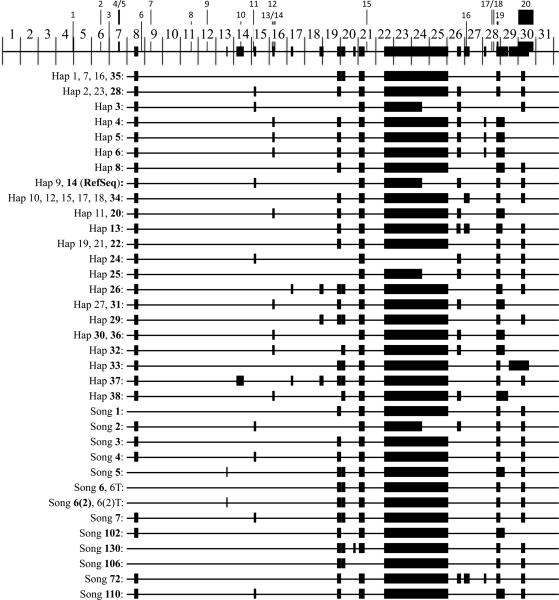Figure 2.
Human DPP length haplotypes and positions of indels and disease-causing mutations in merged human DPP. Top: The merged DPP sequence (from Fig. S2) is shown divided into a little over 31 equal, numbered segments corresponding to 90 bp (30 aa) of DPP. The thin bar represents universal segments found on all DPP length haplotypes; the thick bars are variable regions found only on some DPP length haplotypes. The numbered lines above the merged DPP map mark the locations of the twenty DSPP 3-prime disease-causing mutations (listed in Fig. 3). Note that most indels are located in the downstream half of the DPP code. Bottom: Maps showing positions of the indels (thick bars) on each of the 33 novel length haplotypes. The first seven segments of DPP show no length polymorphisms and are not included in the diagrams for each length haplotype. There can be multiple DPP haplotypes for each length haplotype because of nucleotide substitutions (polymorphism that don't effect length). The 22 length haplotypes from McKnight et al. (13) and 13 length haplotypes from Song et al. (22) are shown.

